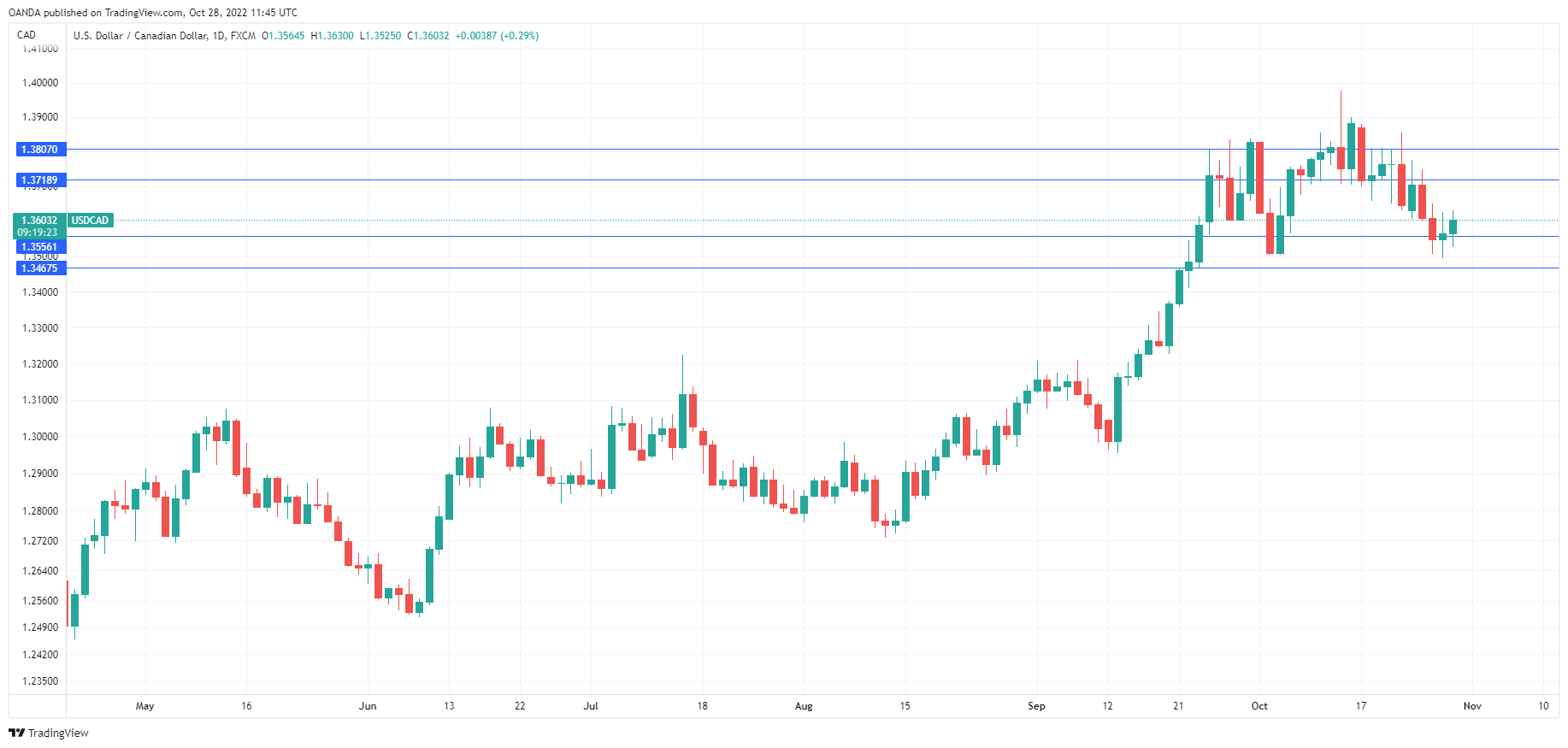The Canadian dollar is lower today. In the European session, USD/CAD is trading at 1.3617, up 0.39%.
Markets Eye Canada’s GDP
The week wraps up with Canada’s GDP for August. The economy is expected to have expanded by 0.1%, which would be unchanged from July. The economy is likely heading into a recession, and Finance Minister Chrystia Freeland stated recently that the coming months would be a “challenging economic time.”
The government’s key priority is curbing high inflation, which has eased slightly. In September, inflation fell to 6.9%, down from 7.0% in August. Still, this was higher than the consensus of 6.7%, as soaring food prices kept inflation from falling further. The good news is that inflation appears to have peaked from the June level of 8.1%, which marked a 40-year high. The bad news is that core inflation was unchanged at 5.3% in September, a sign that inflation remains sticky, despite the Bank of Canada’s aggressive rate-hiking cycle.
High inflation pushed the BoC to deliver another oversize rate on Wednesday, but the 0.50% hike was considered dovish, as the consensus stood at 0.75%. The cash rate is now at 3.75%, its highest level since 2008. Although inflation is far from being beaten, Canada’s economy is clearly slowing down as a result of the steep increase in rates, and the BoC is easing up on the rate pedal just a bit, in the hopes of guiding the economy to a soft landing and avoiding a recession. High rates are weighing on households and businesses and the BoC is concerned that further oversize rates may pose a risk to financial stability.
The US releases Personal Income and Spending data later today as well as the Fed’s preferred inflation indicator, the Core PCE Price Index. The index is expected to rise to 5.2%, up from 4.9%, but I don’t expect today’s numbers to change the Fed’s plan to raise rates by 0.75% next week.
USD/CAD Technical
- There is support at 1.3656 1.3467
- 1.3718 and 1.3807 are resistance lines
